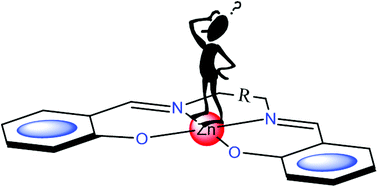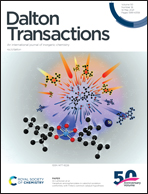Lewis acidic zinc(ii) salen-type Schiff-base complexes: sensing properties and responsive nanostructures
Abstract
In this frontier article some peculiar characteristics of Zn(salen)-type Schiff-base complexes are reviewed. The paper is mainly focused on the most recent and relevant achievements on responsive supramolecular nanostructures and sensing properties, both of them related to the Lewis acidic character of the ZnII centre in these molecular species, providing an interpretation of these features. The sensing properties of Zn(salen)-type complexes mainly originate from optical spectroscopic changes associated with the formation of the adducts upon addition of a Lewis base (analyte), either by deaggregation of dimeric species or displacement of the solvent coordinated to the metal centre. In both cases the direct sensing is related either to the Lewis acidic character of the complex as well as to the Lewis basicity of the analyte. The formation of responsive nanostructures with fluorescent, and/or vapochromic, mechanochromic, and thermochromic characteristics is driven by non-mutual intermolecular Zn⋯O interactions, further stabilized by π–π stacking interactions and/or interdigitation of the alkyl side groups. The Lewis acidic character is not a prerogative of Zn(salen)-type complexes of tetradentate Schiff-bases. Many other classes of ZnII complexes can possess this property. A correct interpretation of their chemistry is certainly useful for further development of these classical coordination compounds as new molecular materials.

- This article is part of the themed collection: 2021 Frontier and Perspective articles


 Please wait while we load your content...
Please wait while we load your content...